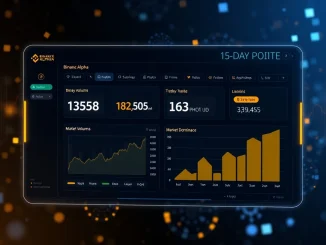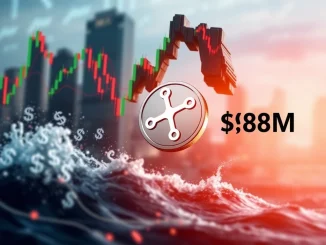
Big news from the world of stablecoins! Tether, the company behind the largest stablecoin, Tether USDT, is making significant strides in the user control space. CEO Paolo Ardoino recently shared exciting updates about a project that could reshape how people interact with digital assets: a new Tether wallet development kit.
Tether Wallet: What’s Happening with the Development Kit?
According to Tether CEO Paolo Ardoino, the company is actively testing a template for its non-custodial wallet development kit (WDK). This isn’t just another app; it’s a foundational tool designed to empower developers and users alike.
Here’s what makes this WDK noteworthy:
- Non-Custodial by Design: Users retain full control of their private keys and, therefore, their funds. This is a core principle for true digital asset ownership.
- Seamless User Experience: The kit aims to simplify interaction with digital assets.
- Gasless Transactions: A major hurdle for many users is network fees. This WDK intends to enable transactions without requiring users to hold native blockchain tokens for gas.
- No API Key Requirement: Simplifying the development process and potentially reducing points of failure or complexity for end-users.
- Full User Control: Reinforcing the non-custodial aspect, the design prioritizes user autonomy over their assets.
Why Focus on Non-Custodial Wallet Development Now?
The move towards a non-custodial wallet aligns with the core ethos of cryptocurrency – putting financial control back into the hands of individuals. While custodial solutions offer convenience, they require users to trust a third party with their private keys, introducing counterparty risk.
Tether’s push into non-custodial crypto wallet development suggests a commitment to fostering a more self-sovereign ecosystem around Tether USDT and potentially other digital assets.
The Ambitious Goal: 1 Trillion Wallets
Perhaps the most striking detail shared by Paolo Ardoino is the sheer scale of Tether’s ambition. The company plans to release the WDK as open-source technology. The stated goal? To support the creation of up to 1 trillion new wallets.
This number is staggering and speaks to a long-term vision of massive global adoption. By making the kit open-source, Tether hopes to lower the barrier for developers worldwide to build user-friendly, self-custodial wallets, potentially integrating Tether USDT and other assets, without needing to build the core wallet infrastructure from scratch.
What Does This Mean for Tether USDT Users and Developers?
For existing and potential users of Tether USDT, this could mean access to a wider variety of secure, easy-to-use wallets in the future. The focus on gasless transactions and a simple interface could make interacting with USDT more accessible, especially for newcomers to the crypto space.
For developers, an open-source, non-custodial WDK from a major player like Tether could significantly accelerate innovation in the wallet sector. It provides a robust template, potentially saving considerable time and resources in building secure, feature-rich wallets.
Comparing Custodial vs. Non-Custodial Wallets
To better understand the significance, let’s quickly look at the key difference:
| Feature | Custodial Wallet | Non-Custodial Wallet |
|---|---|---|
| Private Key Control | Held by the service provider | Held by the user |
| User Control over Funds | Requires trusting the provider | Full, direct control |
| Counterparty Risk | High (risk of platform failure, hacks) | Low (user is responsible for key security) |
| Ease of Use (typically) | Often simpler interface | Can have a steeper learning curve (but improving) |
| Tether WDK Approach | N/A | Focused on enabling this model |
Tether’s WDK is clearly aiming to bring the security and control of non-custodial solutions with the ease of use often associated with custodial services, particularly through features like gasless transactions.
Looking Ahead
While still in the testing phase, the announcement of Tether’s non-custodial wallet development kit marks a potentially significant step. The combination of a focus on user control, technical simplicity (gasless, no API key), open-source availability, and an audacious goal of supporting a trillion wallets positions this project as one to watch in the evolving landscape of crypto infrastructure. It highlights Tether’s ambition beyond just being a stablecoin issuer, moving towards becoming a key enabler of broad digital asset adoption.
Conclusion
Paolo Ardoino’s update signals Tether’s serious entry into facilitating widespread non-custodial access to digital assets. By developing and open-sourcing a WDK designed for ease of use and scalability, Tether is laying groundwork that could significantly impact crypto wallet development and bring the benefits of self-custody to a much larger global audience. The journey to a trillion wallets begins with foundational tools like these.



